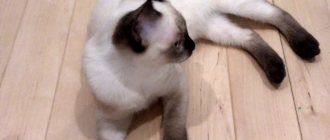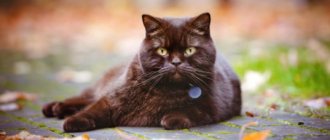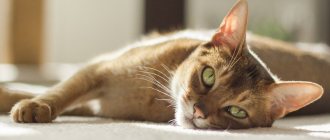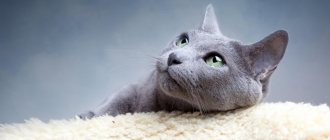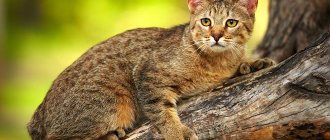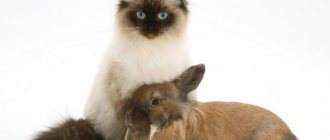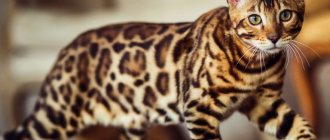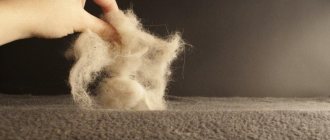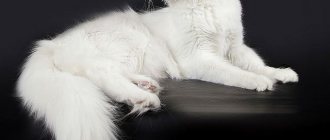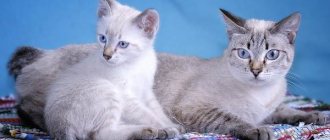British cats are distinguished by their coat palette: diverse, complex and rare in color. The British lilac, recently bred by English selectors, delights with the richness and sophistication of its color. With shades of varying intensity, it appealed to fans of the British cat breed and became popular.
Features of color
Of the two hundred different colors of animal fur, the lilac Briton delights with its tenderness, subtlety, lilac or lilac tones. The peculiarities of this color are the following shades: gray-pink; lavender; isabella Felinologists can distinguish every subtle tone. This color is difficult to both describe in words and convey in photographs.
The light one is reminiscent of lavender, akin to pink with a cool silvery tint;
The middle one is called warm lilac, close to cream with a slightly purple tint;
Dark or isabella, like coffee diluted with milk.
The right approach to feeding
The Lilac Briton's diet should be healthy and balanced. If the cat is on natural feeding, the following food should be present:
- turkey;
- chicken;
- rabbit;
- veal;
- eggs;
- vegetables;
- cereals
Veterinarians from the Zoovet clinic do not recommend giving fish and fermented milk products more than once a week. If necessary, the diet can be diluted with industrial complementary foods, but when choosing them it is important to take into account the gender, age and health status of the pet. It is recommended to focus on premium segment feeds.
Origin of color.
At the end of the last 29th century, English breeders worked on the breed for 10 years. Experimental matings were carried out between cats and cats of chocolate color with a strong gene and blue cats with a weak one. As a result of painstaking work, we achieved an amazing result: a lilac British cat of an exclusive color. The color was adopted by felinologists 30 years ago, registered as an independent standard species with the official international names Lavender and Lilac, the breed and color are indicated in the passport with the letter “c”.
Upbringing
The basis of a cat's diet is meat and fish (up to 90% of daily intake). The diet must include vegetables, grains, yeast and cottage cheese (milk). Adult British purple males are often switched to environmentally friendly industrial feeds containing the required amount of fats, carbohydrates, vitamins and microelements.
Sometimes the composition of the products negatively affects the purple color of the coat. For example, iodine in seafood can turn a cat's fur purple, which is not common in British cats. Therefore, when changing food, monitor the condition of your cat's coat and adjust the diet in case of an unexpected change in color.
British Shorthair
Shorthair British lilac cats are large animals with a powerful, proportional body, with hair uniformly distributed in color throughout the body. The weight of males can reach up to 6 kg, females are much lighter, up to 4 kg.
Description of the standard nuances that British lilac has:
- The head is large with rounded outlines, a wide nose, plump cheeks covered with wool of a basic tone;
- The fur on parts of the body is evenly colored along its length;
- On the neck of the British Lilac cat there is a necklace in the form of a small fold;
- Short, strong paws with pinkish pads;
- The fleshy tail is colored to the rounded tip;
- Widely spaced, medium-sized ears with slightly rounded tips are covered with wool of a basic tone;
- Eye color varies depending on the shade; copper; amber; orange.
General appearance of the breed and its changes since the beginning of breeding
The appearance of the British cat varied depending on breeding and breeding purposes. To understand what a cat looked like at the beginning of its pedigree, you can turn to the work of the artist Harrison Weir mentioned above. He was a great animal lover, he was active in many clubs and often presented animals.
The first photos show medium-sized cats in a single-color gray-blue color or in a two-color version (white with dark accents). By the end of the 19th century, the British still had long hair, which they got from crossing with other breeds.
Later, work was carried out to enhance individual traits. Breeders paid attention to the color and quality of the coat. As a result, the British cat's fur resembled a delicate plush of a persistent gray-blue color.
During World War I, purebred animals became rare. Long-haired Persians and other exotic breeds came into fashion, and the descendants of local village cats were relegated to the background.
To save the local species, breeders even crossed the British with the French Chartreuse breed, which were not genetically related but were very similar to their English counterparts.
- Later, the offspring of mixed "marriages" with Persians were separated into a separate longhaired breed, and the real British formed the cat breed that exists today, in 1970.
- The cat is medium-sized, stocky, with a well-developed chest.
- The head is round in shape with large cheeks.
- The ears are set wide apart.
- Large round eyes, copper-orange in color. Depending on the color, their shade may differ.
- Cats have a medium-length tail, wide at the base and rounded at the tip.
- The legs are short (relative to the body), the feet are full and rounded.
- The coat is thick, dense and short.
How to get color
Breeding lilac British cats, this rare color, is almost difficult for owners to obtain at home. Purposeful, painstaking selection by experienced breeders, with the selection of parental pairs, with knowledge of genetics, only in 25% ends in obtaining the desired result, like the producers.
Obtaining colors depends on the presence of certain pigments in the animal’s fur in the form of two melanins:
- pheomelanin - red-yellow,
- eumelanin – black.
The final shade affects the ratios in which these pigments are found in relation to each other. Even when a cat and cat become carriers of the desired gene, there is no firm certainty that the kittens born will be of a rare color. Therefore, practicing breeders do not recommend mating two lilac sires with each other. Such mating results in offspring with a grayish dirty tone in color, and the pink note disappears.
Experienced breeders achieve the birth of standard lilac offspring by breeding cats and cats of blue and chocolate color, which contain recessive genes.
When only three variants of parental pairs are mated, they get different colors in intensity, if towards purple:
- + blue, light reminiscent of lavender;
- + chocolate, medium close to cream;
- + black, dark or isabella;
Kittens
The color of a child's coat from birth differs in color as it matures. By the age of one and a half years, the tone gradually changes and becomes purple. The initially gray-blue tint of the paw pads, nose and edging of the mucous membranes begins to acquire the main color, and the blue and gray eyes become yellowish, golden or copper. Up to 5 months, kittens have grayish spots and stripes, but then in purebred lilac kittens, the attachments disappear. In a mature pet, the fur becomes the same color out of three possible shades.
History of appearance
Interestingly, this color was originally called Isabella, as it was named after the French Queen Isabella. Why? Because one day it was this queen who discovered such a new shade. And it all happened like this...
One day her husband went on a hike, and she swore to him that she would not take off his shirt until he returned back. Time passed, and this shirt acquired a light gray tint. This is how the Isabella color appeared.
Most people love these British cats not only because of the color of their coat. After all, they themselves are kind, active and affectionate animals. They quickly become attached to their owners and remain loyal to them.
Among the disadvantages of such a pet is nutrition, since they are very picky and demanding in this matter.
Who is the lilac Briton suitable for?
When choosing a Lilac pet, the important arguments are:
- British kittens, like their parents, have the same lilac-colored characteristics that will be a source of pride for their owner.
- The British have a soft, good-natured character; pets immediately become family favorites.
- Lilac is brought into a home with small children, and they get along well.
- They tolerate loneliness calmly and do not get bored, which is important for busy owners.
- Balanced by nature, they are clean and will not create a mess in the house.
Character and behavior
The character of these cats is independent, quite independent. They are characterized by impressiveness, sedateness, good manners and a developed sense of tact. They know how to spend time alone and need personal territory. They don’t like being forcibly held, squeezed, or stroked.
At the same time, the British are able to tenderly become attached to people, without singling out the main owner in the family, and are friendly towards children, if they do not allow themselves too much.
Be careful with strangers; the cat will need time to get to know the guest; you should not speed up the process. Get along well with other pets. The combination of self-sufficiency with kindness and intelligence makes them excellent friends for owners who spend a lot of time outside the home.
Sterilization
Sterilization is a more complex operation than castration, and the younger the cat, the easier it tolerates it. It is done when the pet is 7-8 months old.
First, the doctor examines the animal, administers auxiliary medications and anesthesia. Then he shaves the hair in the right place, cuts the skin on the stomach and removes the ovaries. Then he puts stitches and waits for the cat to begin to recover from the anesthesia.
The rehabilitation period does not take much time and does not cause complications. Arriving home, the cat should be placed in a warm, dark place so that bright light does not enter its open eyes. Under the influence of anesthesia, cats sleep without closing their eyes. While the pet is sleeping in this state, the eyes should be dripped with drops to moisturize or with saline solution, which is used to store lenses (0.9% NaCl). Or go up to her every five minutes and cover your eyelids with your fingers so that the mucous membrane is moistened naturally.
The seams will need to be treated independently, using antiseptics: Dioxidine, Chlorhexidine or hydrogen peroxide. If necessary, you can lubricate with ointment to accelerate the healing process of wounds.
The veterinarian necessarily prescribes antibiotics and explains how and with what to dilute it. If the owner cannot give the injection himself, he calls a doctor to the house or brings the cat, if he has such an opportunity.
Video “Funny British cat babies”
The video shows newborn kittens of lilac and chocolate color.
Was this article helpful?
Thank you for your opinion!
The article was useful. Please share the information with your friends.
Yes
No
X
Please write what is wrong and leave recommendations on the article
Cancel reply
Rate the benefit of the article: Rate the author ( 1 vote(s), average: 5.00 out of 5)
Discuss the article:
